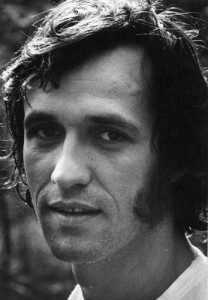BIOGRAPHY
Alighiero Boetti (1940-1994) – or Alighiero and Boetti as signed in 1971 – was born in Turin where he made his debut in the Arte Povera in January 1967.
In 1972 he moved to Rome, a context closer to his predilection for the South of the world. Already in the previous year he discovered Afghanistan and started the artistic work he entrusted to the Afghan embroiderers, including the Maps, the colored planispheres that he will propose over the years, as a register of political changes in the world.
A conceptual artist, versatile and kaleidoscopic, he multiplies the types of works whose execution – in some cases – is delegated with precise rules to other subjects and other hands, following the principle of ‘necessity and chance’: so the Biro (blue , blacks, reds, greens) in which the dotted pattern depicts language; thus the embroideries of letters, small or large, and multicolored; or the Tutto, dense puzzles in which heterogeneous silhouettes are found, including shapes of objects and animals, images taken from magazines and printed paper, and much more, really ‘everything’ (Tutto in italian).


There are also postal works played on the mathematical permutation of the stamps, the haphazard adventure of the postal journey and the secret beauty of the sheets contained in the envelopes.
Another sector of Boetti’s work, unmistakably his own, offers in the early ’70s many’ exercises’ on squared paper, based on musical or mathematical rhythms; then on paper, light compositions in which ranks of animals recalling the Etruscan and Pompeian decoration flow.
Time, its fascinating and ineluctable flow, is perhaps the unifying theme of Boetti’s typological and iconographic plurality.
Alighiero Boetti has exhibited in the most emblematic exhibitions of his generation, from When attitudes become form (1969) to Contemporanea (1973), from Identité italienne (1981) to The Italian Metamorphosis 1943-1968 (1994). He is several times present at the Venice Biennale, with a personal room in the 1990 edition, a posthume tribute in 2001 and a large exhibition at the Cini Foundation in the recent edition of 2017.
Among the most significant exhibitions of the last few years the great Game Plan retrospective has been realized in three prestigious locations (MOMA in New York, Tate in London, Reina Sofia in Madrid).
Of the ample corpus of works, many Italian and international museums are kept, including the Center Pompidou in Paris, Stedelijk Museum, the MOCA in Los Angeles, etc.).


